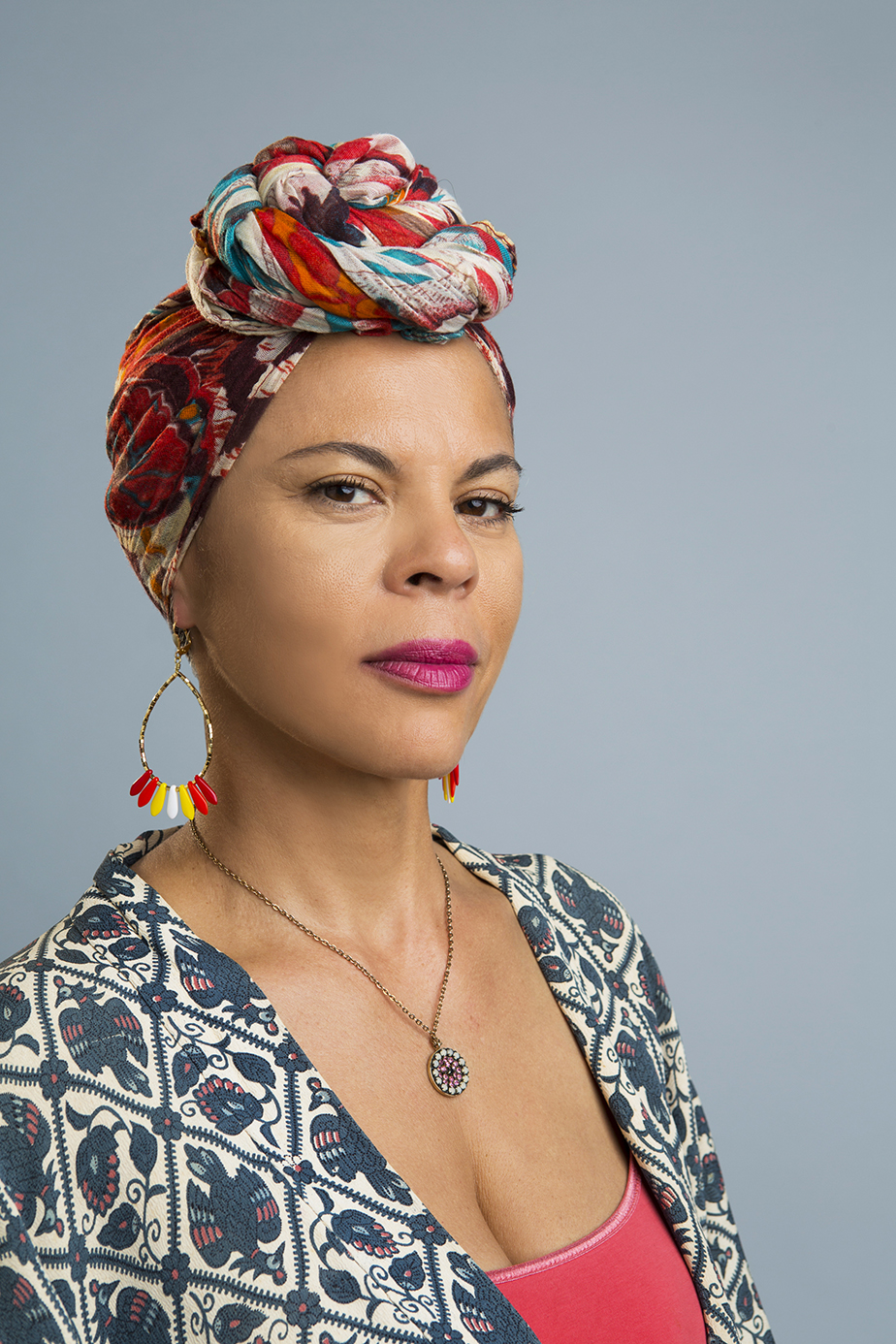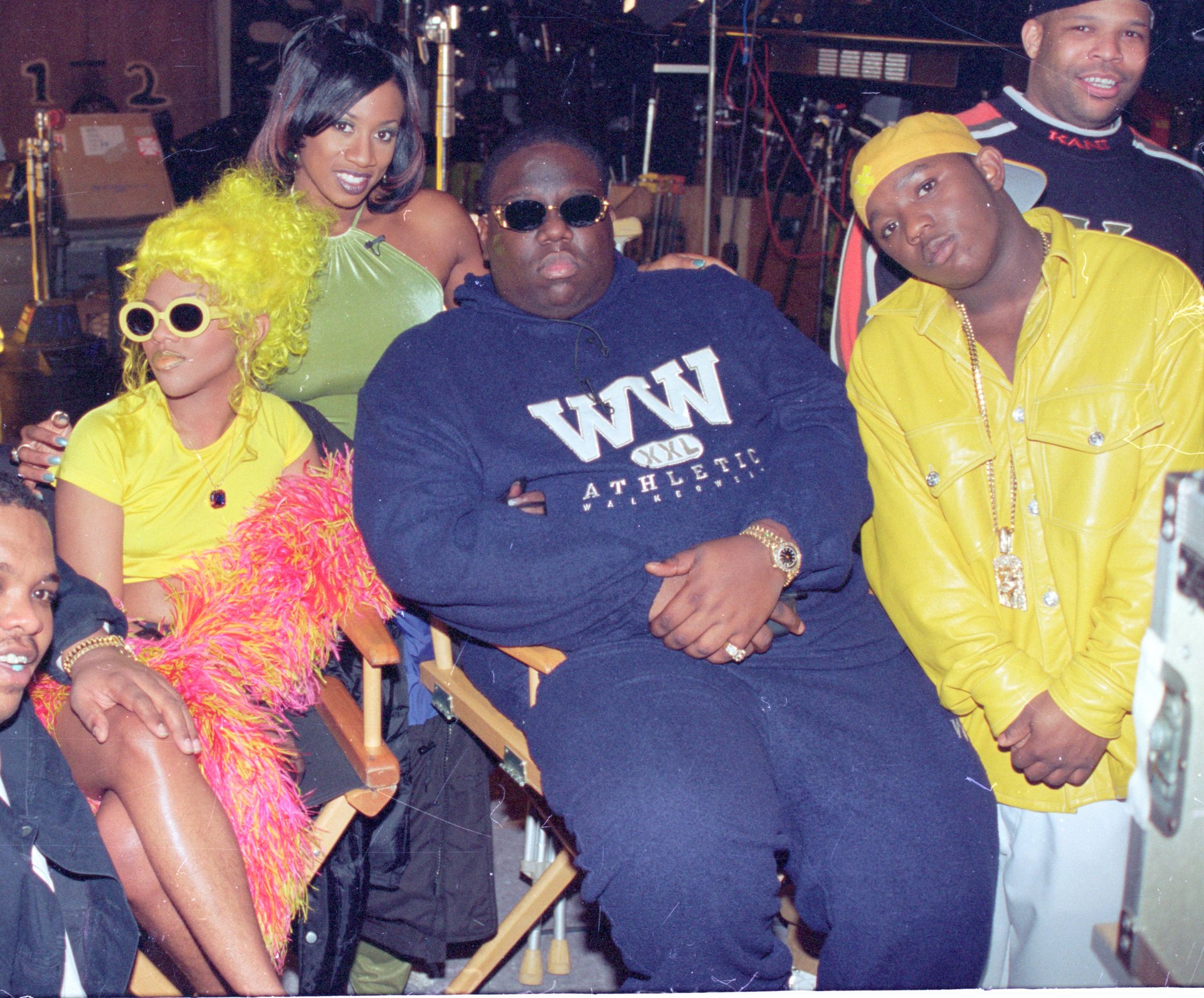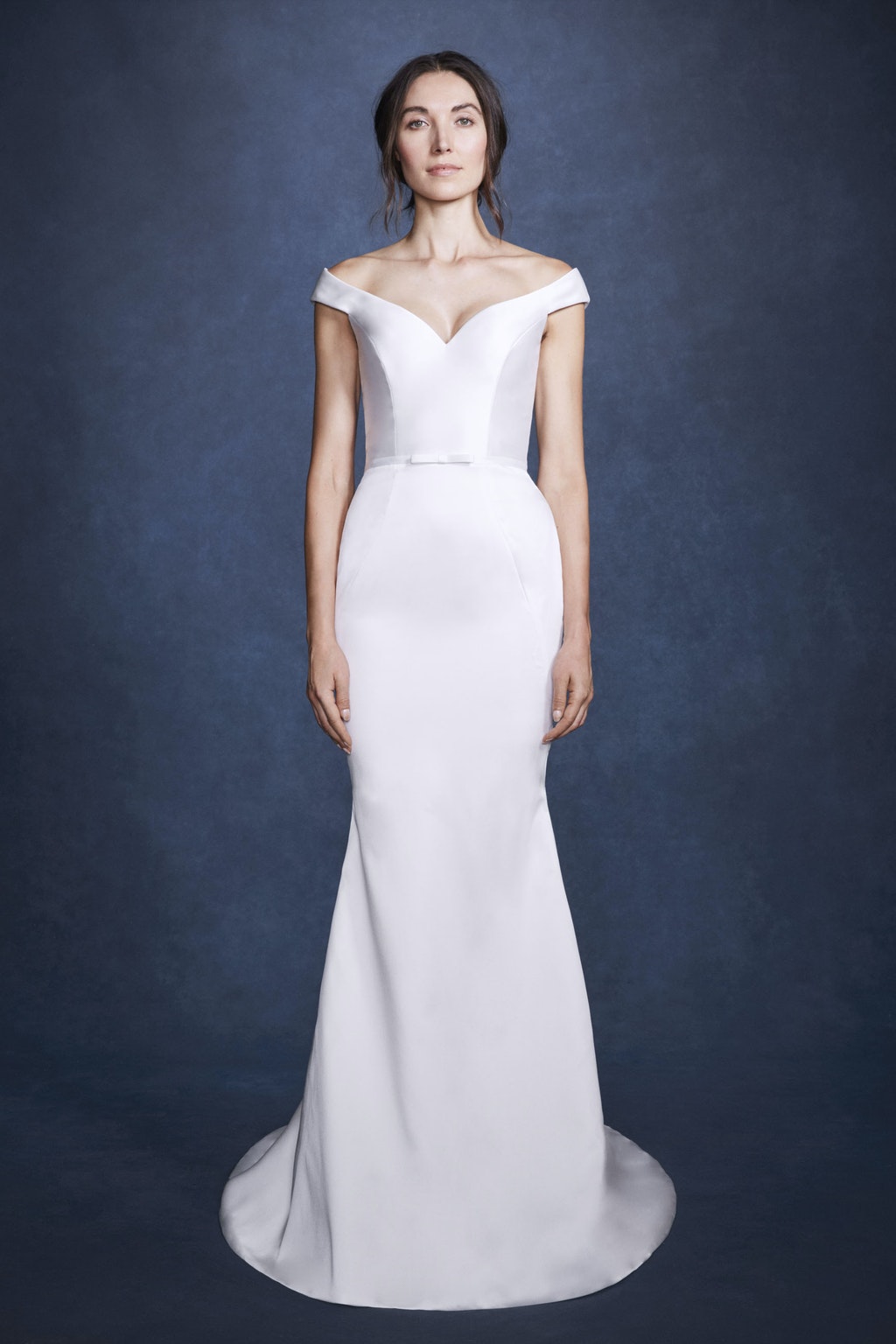Making My Mark: April Walker of Walker Wear
October 8, 2020
Karyl J. Truesdale

April Walker is hip hop royalty. Fortunate for those of us who were happily indoctrinated, as youths, into a culture of graffiti, break dancing, beat boxing, air brushing, shell toe Adidas, baggy jeans, velour track suits, bucket hats, and a music genre called rap……hip hop was born, and we all wanted in!
Walker is a true original – a female hip hop pioneer, a trailblazer, the first woman of color to simultaneously open a clothing boutique and start a streetwear brand during hip hop’s golden era.
Establishing herself in Brooklyn with a word of mouth reputation in a heavily male dominated arena, she’s stood the test time, broke barriers and left the legacy of Walker Wear in hip hop’s fashion history.
Walker also stars alongside Dapper Dan and Misa Hylton in the documentary The Remix: Hip Hop X Fashion, which had its world premiere at last year’s Tribeca Film Festival and currently streams on Netflix.

The year is circa 1987. Take us back to the golden era of hip hop and describe that time for those not lucky enough to experience what New York City was like.
New York was such a melting pot of excitement and change. There was an influx of money, and it wasn’t just here. It was in D.C., it was in LA, and there were hustlers making a ton of money on the streets. Cocaine and crack had become mainstream across America in the 80s… what we now know as “the crack era.” I was in college and deciding what to do with my life. It was exciting. We were listening to this thing called hip hop that had just become mainstream. I’d like to call it the voice and generation of the unheard and at that time, it really brought in a spirit of entrepreneurship. Music was commercially viable. You had acts like Run DMC, LL Cool J, and Public Enemy really making noise. In 1984, I attended The Fresh Fest concert at Madison Square Garden and I was like Wow! These guys are on stage in shell toe Adidas, performing, living their best lives, against all odds and everything I had learned about dressing for success was no longer true. All my rules went away. The streets of New York had such a crazy energy and you had this mix of corrections officers, hustlers, rappers, nine-to-five blue and white collar workers hanging out together in places like Bentleys, or The Shadow. It was special. It wasn’t about labels –we’re all here having a good time. Everyone wanted to be unique and no one was the same. You had Studio 54 and The Funhouse. There were cultures and subcultures being formed organically from The Lower East Side to Harlem. There was this mesh of surf and punk and rock-n-roll and hip hop and skate life. It all converged into a hangout scene with the sense that ‘we may all be different but we can all pop in each other’s clubs and not stand out.’ The energy was on 10 plus!
You are a pioneer, and the first woman of color to create a hip hop clothing line and open a boutique simultaneously. Did you understand the impact you would have on the culture?
No, of course not. I was a baby and just following my passions. I had no clue how the culture would explode – it was much bigger than me! What I did know is that I had something special and that it wasn’t about ego; it was about the timing and the energy. When I first opened my shop, it became a magnet for culture; break dancers, hip hop dancers, air brushers, graffiti artists and hustlers were finding out about this diamond in the rough. We were located between Clinton Hill And Bed Stuy in Brooklyn –and it was rough in the 80s. I was looked at as crazy. But crazy is a compliment, right? Because as everybody is going right, you go left. I was following my heartbeat. I knew I wanted to be independent. I was already a hustler from the age of 13 with my hands in many ventures. I was inspired a lot by Dapper Dan. I would hang out at his place after the Apollo,. thinking to myself, we have nothing like this in Brooklyn. In the 80s you could tell where everyone was from by the way they dressed. Brooklyn and Harlem were two different things. I wanted to make clothes for hip hop that spoke to us. My shop was off hours. I would stay open until midnight so word of mouth spread and my place became a magnet in Brooklyn. Everyone wanted to come as we were all trying to figure out what this thing called hip hop was.
Since hip hop is all about the streets, how important was the brand Walker Wear to the streets of Brooklyn?
Our first custom shop was Fashion in Effect. We noticed that our customers, our tribe, began to ask us for the same thing repeatedly: “I want deeper pockets;” “ I want more legroom; “ The crotch is too high, can you lower the crotch;”“ Keep the jeans straight at the bottom but I need the fit to sit inside my Timberlands or outside my Timberlands.” We just listened. We made specs and created our version of that and that’s what became our first Walker Wear rough and rugged suit. We started out making couture…tuxedos, gowns, Easter suits, leather suits, coats, denim. We would mix fabrications using a substantial amount of velour and terry. Fashion in Effect became our test marketing ground. Customers came into the shop and asked us to custom-make something they saw in a music video or at other retailers, and it was something that we had made. It was the same requests over and over. That’s how we created our first Walker Wear collection. We knew we had an audience, because it was already tested by our tribe. Brooklyn wanted products that were crazy dope. I always tried to make fashion that was good on the East and West coast. In conjunction, we knew when NWA came out that, that movement was going to be so big, our designs had to appeal to both coasts.
The style during the height of hip hop was very baggy and oversized. What inspired that fit and silhouette opposed to the current narrow and fitted technique?
Hip hop dancers – both male and female – appreciated the baggy fit of Walker Wear because of its carefree movement. “Walker Wear was also the first hip hop clothing line with women in mind,” a former hip hop dancer of former rap legend Heavy D told me. The ladies felt they could still be stylish on stage in their denim suits and do their dances and splits. My thing was always: Fashion Fit and Function. For men, it was something they could wear by day, transition to evening, and wear to the club at night and serve two functions. For women, the clothes served as utilitarian style: something that was functional for dancing and other things.
So, you were ahead of your time in creating that trend?
Instincts, I guess. The rest is God.
As a female trailblazer of the hip hop movement, what was your most challenging exploit?
As a woman of color, I had two. One of my biggest challenges was fighting to be seen and when I say seen I don’t mean seen for publicity. I mean opportunities. The gatekeepers kept opportunities at bay, and they were masked with invisible challenges and often times it was a boy’s club. It was very hard even with my competition because it’s a club – like the rest of world along with society. It was very different at that time, and we had to become innovators with our ideas in order to get our foot in the door. We were crafty and we learned to overcome our obstacles. I had a team luckily. The men on my team helped us to navigate through spaces but it was difficult.
Secondly, financing was always an obstruction for women of color in this business and people of color. It was never easy for people of color in fashion to get the same opportunities as our counterparts.
Do you have any significant regrets as a designer?
That’s a loaded question. My initial gut is no on regrets because I don’t think that serves us well. Every experience is the lesson to take you forward, if you allow it to be. There were times I executed deals with people who did not have my best interest at heart. You need to take your time with deals. A contract can look great on paper, and still not work out – but you really need to pay attention to people’s energy and motives and you only know that by taking your time.
If you could go back in time to April Walker 1987, would you change anything?
Yes! What I would share with everyone is to study your money from the door. This is a business. Learn the fashion business. I lost a lot of money at the beginning because I didn’t use money as a tool, and I didn’t understand how to make the money work for my business. Also, I didn’t pay myself first in the beginning and I always gambled – not in the literal sense – and bet on myself. You must diversify and manage your portfolio and sometimes that’s managing your expectations with yourself and being cognizant. We do get older, and you must prepare for that early. The earlier you can study your money, the smarter you’ll be. Have your raincoat and your rainboots ready when storms come, so you don’t have to work harder later; you can work smarter and have room for playtime. That’s the jewel that I will give everyone.

Who did you enjoy working with the most, and who were your coolest clients?
That’s very tough for me as I enjoyed 98 percent of my clientele base. They were all so different, and what we all created was very special to me. They trusted me and gave me flexibility to create something special.
My first customers are not here anymore, and I think about them now, how they impacted my business. Biggie was huge for me. I knew him when he was a kid and came in my Fashion and Effect shop asking about an Eric B. and Rakim airbrush tee that I had in the window. That encounter sparked a conversation that created a friendship and relationship where, when I created Walker Wear and he signed his deal with Bad Boy Records, he would represent and wear Walker Wear and he never forgot. I met Tupac the same way. I had a styling company in the beginning, so I styled for a ton of music videos and photo shoots. Tupac also made sure he circulated the Walker Wear brand and wore it a lot. That’s how I got to have some inclusivity in styling on the movie Above the Rim. Run DMC’s Jam Master Jay was very instrumental in my success and encouraged me to design my own line and add the Walker Wear logo. When he started the rap group Onyx, he made sure I had the honor of creating everything from their logos to their image and their styling. I also styled Naughty by Nature for years. That experience was also very special.
What’s next for April Walker and Walker Wear?
Building out our legacy and storytelling. Continuing to impact culture and bridge the gap so that people will know our history. How important our brand is and how important storytelling is. We are creating some very special memories, experiences, and products that will encapsulate the legacy and the memory over the next 10 years. In terms of April Walker, I’m big on education. I have a program within the school system called BYOB which stands for “Be Your Own Brand” and “Build Your Own Brand”. I contributed to the course, “Learn How to Launch a Brand with the Parsons X Complex Streetwear Essentials Scholarship Program,’’ and we’re giving 10-15 students interested in streetwear design, scholarships through an online course. I’m also at the starting point of some additional online courses which will be very interesting, and I have the book “WalkerGems: Get Your A$% Off The Couch” and the audio book is ready to drop. A film and another book are on the way, so I’m busy…..good stuff!
Real good stuff! Thank you so much April, this was an immense pleasure!
IG: @walkerwear
Web: walkerwear.com

